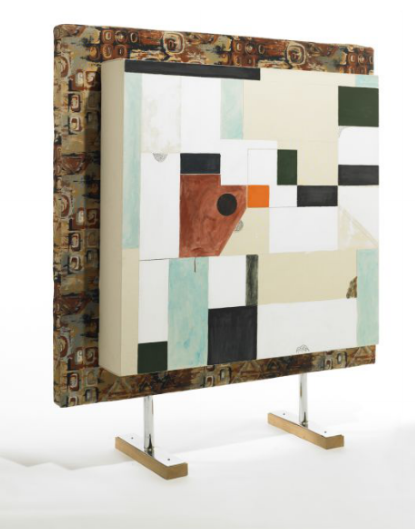Contribution to ‘Ten Great New Zealand Paintings’, Listener, 7 April 2007.
.
Mural for a Contemporary House 4 figured in a big shift in New Zealand art. Julian Dashper was in transition, moving from his early neo-expressionist ‘bad painting’ into the cool, refined neo-conceptualism for which he would become known. To create Mural, he painted a gridded geometry on an absurdly fat, square canvas. Although the composition screamed ‘formal abstraction’, it seemed more arbitrary than considered. Dashper hung the canvas on a clunky room partition, upholstered in a retro fabric and standing on blocky feet. Curator Christina Barton put Mural in her 1989 show After McCahon, noting its similarity to Colin McCahon’s 1950s cubist works. (Here and there, in the edges and corners of his geometry, Dashper had doodled accretions of small curves suggesting vestigial landscape forms, perhaps alluding to the way McCahon’s abstraction had not entirely rid itself of landscape references.) However, in his review of the After McCahon show, critic Francis Pound said Mural was more likely a nod to Gordon Walters’s 1950s work, as if to remind us that the culture’s perennial obsession with McCahon came at the expense of Walters and full-blown abstraction. But no matter which painter Mural recalled, it was never clear that it was even for that painter’s art. It was impossible to tell whether Mural was celebrating or satirising New Zealand’s early modernists, whether Dashper was trivialising geometric abstraction as interior décor or celebrating modernist ideals of design-for-living. He left those questions hanging. What Dashper’s Mural clearly did do, however, was put modernist abstraction—and its formalist ambitions—in inverted commas. It was the end of an era: it was post-formalism.
